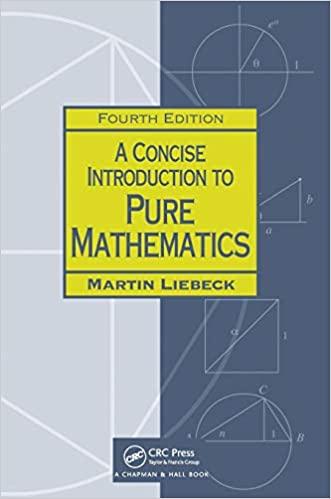Let (B, C, D, E) be the following sets: [ begin{gathered} B=left{x mid x text { a
Question:
Let \(B, C, D, E\) be the following sets:
\[ \begin{gathered} B=\left\{x \mid x \text { a real number, } x^{2}<4\right\} \\ C=\{x \mid x \text { a real number, } 0 \leq x<2\} \\ D=\left\{x \mid x \in \mathbb{Z}, x^{2}<1\right\} \\ E=\{1\} \end{gathered} \]
(a) Which pair of these sets has the property that neither is contained in the other?
(b) You are given that \(X\) is one of the sets \(B, C, D, E\), but you do not know which one. You are also given that \(E \subseteq X\) and \(X \subseteq B\). What can you deduce about \(X\) ?
Fantastic news! We've Found the answer you've been seeking!
Step by Step Answer:
Related Book For 

Question Posted:





